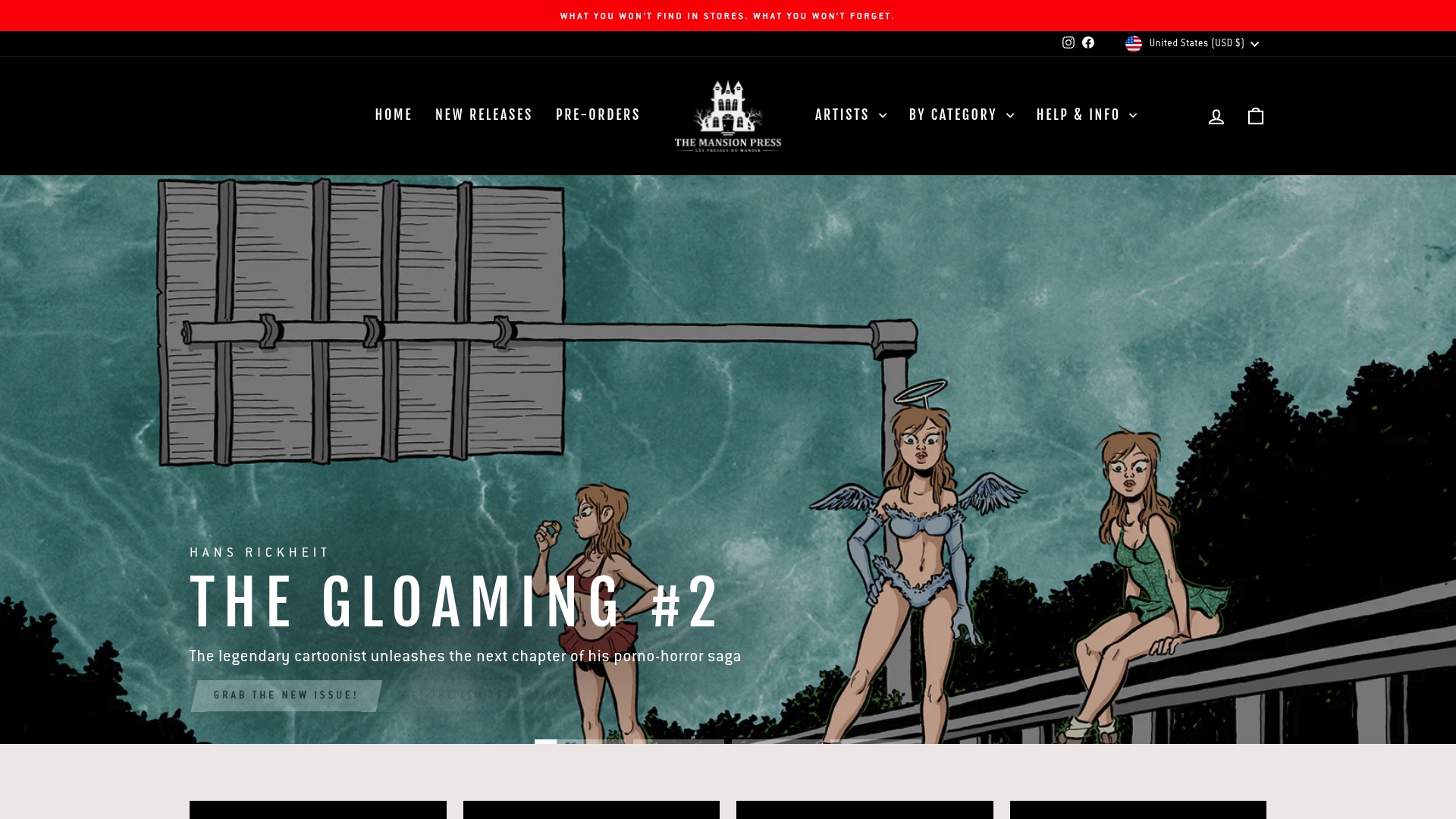How Graphic Novels Influence Culture: Complete Guide
Did you know that graphic novels are recognized as complex educational tools by top universities? Far from being just illustrated stories, these works combine visual art and text to capture social issues, evoke empathy, and communicate layered narratives. Graphic novels have shaped everything from classroom lessons to cultural debates, offering an immersive way to understand history, perspectives, and identities that standard books often overlook.
Key Takeaways
| Point | Details |
|---|---|
| Cultural Impact | Graphic novels serve as significant cultural artifacts that challenge societal norms and provide marginalized voices a platform for expression. |
| Diverse Genres | The medium encompasses a variety of genres, including manga, superhero stories, and personal narratives, reflecting global storytelling traditions. |
| Cognitive Engagement | Readers are required to engage in sophisticated cognitive tasks, including synthesizing visual and textual information, making graphic novels educational tools. |
| Social Transformation | Graphic novels function as instruments of social dialogue, fostering empathy and challenging dominant narratives through diverse cultural perspectives. |
Table of Contents
- Defining Graphic Novels And Cultural Impact
- Major Types And Genres Of Graphic Novels
- Key Characteristics Driving Cultural Influence
- How Graphic Novels Shape Social Narratives
- Challenges And Misconceptions In Graphic Novel Culture
Defining Graphic Novels and Cultural Impact
Graphic novels represent a powerful and dynamic storytelling medium that transcends traditional narrative boundaries. Sequential art isn’t just about pictures and words—it’s a sophisticated communication form with deep cultural roots. According to Britannica, graphic novels are self-contained, book-length works encompassing both fiction and non-fiction, with an academic lineage tracing back through cave paintings, illuminated manuscripts, and woodcut novels.
What makes graphic novels extraordinary is their unique ability to communicate complex narratives. Research from Stanford University reveals that these visual narratives can accelerate critical thinking and capture historical nuances in ways traditional media cannot. By presenting information through intricate visual storytelling, graphic novels prepare readers to:
- Interrogate historical subtleties
- Engage multiple perspectives rapidly
- Process complex emotional landscapes
- Understand contextual depth beyond surface-level information
Beyond academic appreciation, graphic novels serve as cultural artifacts that reflect societal changes, challenge dominant narratives, and provide marginalized voices an innovative platform for expression. They transform how we consume stories, bridging visual art and literary comprehension in a uniquely immersive format. Read more about the unique formats of graphic novels, and discover how this medium continues to reshape our cultural understanding.
Major Types and Genres of Graphic Novels
Graphic novels represent an incredibly diverse storytelling medium with global variations and rich narrative complexity. According to research from EBSCO, the format spans multiple international traditions, including American ‘graphic novels’, European “albums”, and Japanese “tankobons”, each bringing unique cultural perspectives to sequential storytelling.
Research from the University of Arkansas identifies five predominant types of graphic novels that showcase the medium’s incredible range:
- Manga: Japanese comics with distinctive art styles and narrative approaches
- Superhero Stories: Action-packed narratives featuring extraordinary characters
- Non-Superhero Narratives: Often featuring powerful social commentary
- Personal Autobiographical Narratives: Intimate, first-person storytelling experiences
- Non-Fiction Works: Exploring real-world topics through visual storytelling
These genres encompass an impressive array of storytelling styles, from crime and mystery to supernatural narratives and biographical memoirs. Whether delving into intense detective fiction or exploring deeply personal life experiences, graphic novels offer readers immersive worlds that challenge traditional narrative boundaries.
 Check out our guide on strange graphic novel genres to discover the unexpected and fascinating worlds waiting to be explored.
Check out our guide on strange graphic novel genres to discover the unexpected and fascinating worlds waiting to be explored.
Here’s a comparison of the major types of graphic novels and their key characteristics:

| Type | Primary Origin | Typical Themes | Art Style Characteristics |
|---|---|---|---|
| Manga | Japan | Adventure Romance Fantasy |
Black-and-white Dynamic panels |
| Superhero Stories | United States | Good vs. evil Heroism |
Bold colors Action-driven |
| Non-Superhero Narratives | Global | Social issues Drama Mystery |
Varied Experimental |
| Personal Autobiographical | Global | Memoir Identity Growth |
Evocative Expressive |
| Non-Fiction Works | Global | History Science Documentary |
Informative Realistic |
Key Characteristics Driving Cultural Influence
Graphic novels function as powerful social platforms that transcend traditional storytelling mediums, enabling nuanced exploration of complex societal issues. According to research from StudySmarter, these visual narratives actively reflect critical social topics such as racial identity, gender dynamics, poverty, inequality, and political commentary, creating opportunities for cross-cultural dialogue and deeper understanding.
Contrary to popular misconceptions, graphic novels demand sophisticated cognitive engagement from readers. They require active interpretation where individuals must simultaneously:
- Synthesize textual and visual information
- Infer meanings across sequential panels
- Encounter and process complex vocabulary
- Decode multilayered narrative structures
- Engage with intricate visual metaphors
These cognitive demands transform graphic novels from mere entertainment into profound educational tools.
VIDEO:video_content] [Read more about understanding graphic novel formats, which reveal how this medium uniquely bridges visual art and intellectual discourse. The result is a dynamic storytelling format that challenges readers, amplifies marginalized voices, and provides unprecedented insights into human experiences across diverse cultural landscapes.
How Graphic Novels Shape Social Narratives
Visual storytelling emerges as a profound mechanism for social transformation, with graphic novels serving as powerful instruments of cultural dialogue. According to research from Stanford University, seminal works like Maus and The Best We Could Do demonstrate how sequential art can surface complex memories and historical traumas, compelling readers to interrogate deeper societal narratives.
Research from StudySmarter reveals that graphic novels foster unprecedented cross-cultural empathy by portraying diverse perspectives across multiple dimensions:
- Cultural contexts
- Social experiences
- Political landscapes
- Marginalized narratives
- Intersectional identities
By visualizing nuanced human experiences, graphic novels transcend linguistic and geographical barriers, creating global platforms for understanding and connection. Explore our comprehensive guide on narrative techniques to understand how these visual stories meticulously construct empathy, challenge dominant narratives, and provide voice to underrepresented communities. The medium becomes more than entertainment—it’s a revolutionary tool for social understanding and transformative dialogue.
Challenges and Misconceptions in Graphic Novel Culture
Graphic novels frequently encounter pervasive misconceptions that undermine their artistic and intellectual complexity. According to research from KQED, one prevalent myth suggests graphic novels lack academic rigor—a claim soundly disproven by the medium’s intricate cognitive demands, which actually require sophisticated skills like:
- Visual and textual information decoding
- Complex inference across panel transitions
- Engagement with elevated vocabulary
- Multilayered narrative interpretation
- Advanced comprehension strategies
Research from the Association for Supervision and Curriculum Development highlights another critical misunderstanding: treating graphic novels as a singular genre rather than a versatile format spanning multiple narrative styles. This reductive perspective can limit educational approaches and prevent educators from integrating these rich narratives effectively. Explore our guide on misunderstood graphic novels to challenge preconceived notions and discover the depth and nuance of this dynamic storytelling medium. Ultimately, graphic novels represent a sophisticated art form that demands intellectual engagement and offers profound insights into human experience.
Bring Cultural Storytelling to Life With Unique Graphic Works
Have you felt the powerful impact of graphic novels and wondered how to experience their depth and visual artistry firsthand? The article uncovered how graphic novels bridge historical nuance, social commentary, and complex identity through sequential art—yet one key challenge remains. Many readers struggle to find authentic, limited-edition graphic novels and original art pieces that capture these cultural influences and allow you to connect deeply with creators’ visions.

Now is your chance to discover exclusive artbooks, collector’s comics, and original works crafted by independent artists worldwide. At The Mansion Press, browsing our curated collection means direct access to narratives that challenge perception, elevate marginalized voices, and celebrate creative diversity. Ready to own a piece of cultural storytelling? Start your journey at The Mansion Press and explore unique releases you will not find anywhere else. Don’t just read about art—collect it, support real artists, and make these transformative stories part of your world today.
Frequently Asked Questions
What are graphic novels, and how do they differ from traditional comics?
Graphic novels are self-contained, book-length works that use sequential art to tell stories, both fiction and non-fiction. Unlike traditional comics, which are often shorter and episodic, graphic novels typically present more complex narratives and character developments.
How do graphic novels influence critical thinking and understanding of history?
Graphic novels can accelerate critical thinking by allowing readers to engage with multiple perspectives and process complex emotional landscapes through visual storytelling, providing deeper context and nuance to historical events.
What are the main genres of graphic novels?
The main genres include Manga, Superhero Stories, Non-Superhero Narratives, Personal Autobiographical Narratives, and Non-Fiction Works. Each genre offers distinct storytelling styles and themes, ranging from adventure to powerful social commentary.
How do graphic novels serve as social commentary?
Graphic novels function as platforms for cultural dialogue by exploring social issues such as racial identity, gender dynamics, and inequality. They provide a means for marginalized voices to express their experiences and challenge dominant narratives through compelling visual stories.

